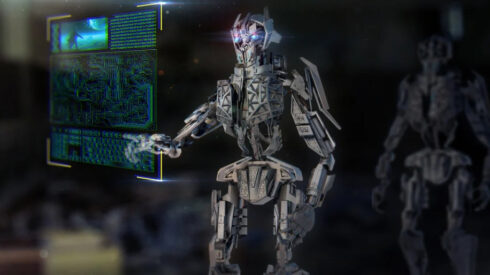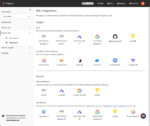
The IT world is changing faster than it ever has before, and IT professionals and decision-makers need to stay on top of these changes in order to respond accordingly for their organizations.
In a talk at Gartner’s IT Infrastructure, Operations & Cloud Strategies Conference, Jeffrey Hewitt, VP analyst at Gartner, shared predictions on the top emerging trends that will impact infrastructure and operations (I&O) over the next 12 to 18 months.
RELATED CONTENT: Adapting I&O to an ever-changing world
“You will see these trends influence what you do over the coming months and the coming year,” Hewitt said. “What should you do? Well, what we would say is identify any of those trends that are most likely to impact your organization. As you go forward, prioritize and decide what will be most important to our strategic organizational goals as we move forward. Identify where there are skills and competency gaps, so that you can work with your human resources departments to create those career lattice paths, create training, get the appropriate hiring and recruitment in place, and create a strategic plan to ensure the skills you need to deal with these trends are in place.
Just-In-Time Infrastructure
This new trend is the idea that infrastructure is not only put in at the right place, but that it is put in quickly. This can span from data centers to the edge to a public cloud. Hewitt recounted that when he looks at purchase agreements from providers, every line item also has an associated expected delivery time.
“There’s good news about this, it speeds the responsiveness to business needs and also to help enable what we’ve been describing as anywhere operations — operations that can occur in any place,” said Hewitt. “We’ve seen COVID have a tremendous influence on not just remote working, but enabling this business to go on wherever it needs to take place dynamically. This also can improve the negotiation position that you have, because you have a number of choices. And you can introduce the factor of how fast am I going to get this? I need it in this timeframe. So it puts you in that position to be able to evaluate different choices and different providers in terms of how fast they can get something in place.”
Digital Natives
This refers to a company that has been using public cloud since the launch of their company. Examples of these digital natives include Uber or DoorDash. Hewitt predicts even more of these digital natives will spring up across more in different industries.
Digital natives present a challenge to established companies with legacy systems who need to leverage more speed in order to compete with digital natives. This can also be seen as an opportunity for those companies to become more agile and compete more effectively in a marketplace of digital natives.
Management Confluence
This trend is a convergence of multiple different management tools into a single tool. “We’re talking about application resource management, application performance monitoring, digital experience monitoring, and so on,” said Hewitt. “So what you are seeing is an ongoing trend for I&O to not just be infrastructure and operations, but integration and operations. How do I put these things together and make them work together and leverage the results from a combination of tools? So we’re going to see vendors drive this for sure, we’re going to see them try to acquire and add capabilities that integrate more views together to get closer to a single pane of glass.”
This also aligns with the trend of hyperautomation, because automation needs to be brought in to make this convergence happen.
Getting tools from different vendors into one view will require collaboration between many different groups.
Data Proliferation
Data is being generated faster than ever, across all parts of the organization. This leads to challenges of how to store all that data, how to sort through what data is valuable and what isn’t, and how to manage data. I&O plays a big role in facilitating these needs. But in some cases, data challenges will be out of I&O’s hands, such as when legal requirements come into play.
One way to deal with these challenges is through enterprise information archiving, according to Hewitt. “It’s an effective way to help you deal with regulatory risks, for example, and the costs so that you can analyze and decide what you need to do to help support keeping the right data and getting rid of things you don’t need that could cost you money,” he said.
Business Acumen
Hewitt recalled seeing a survey a few months ago that claimed that CIOs are requiring 15% of new I&O hires to not have technical degrees. Hewitt suspects that these non-technical degrees will be business degrees.
“It helps us have a view of what we will describe as the value stream from the conception of a business to solve a problem or meet a certain need,” said Hewitt. “How do we deploy some kind of a solution to solve that problem and help us enable what we need for the customer to the delivery of it and the ongoing support of that solution? So this value stream thinking is also a business-related function, not just technical. Good news is this can help drive effective collaboration with business unit leaders. If I have people I know that can talk the business language, that can do business exercises that business unit leaders understand, that improves the collaboration, and ultimately improves the results because you get better business-driven decisions as you introduce this thinking.”
Career Ladders to Career Lattices
A similar trend is that I&O is moving away from having a single domain career path. Now I&O professionals will move laterally across a competency-based lattice that incorporates soft skills and incorporates learning agility.
Having a career lattice that allows I&O professionals to shift will help companies better deal with changes in I&O trends.
“While this certainly requires a mindset adjustment for some of the more tenured I&O workers, there will be much more opportunity within I&O teams as they move away from territorial thinking and toward fostering a collaborative environment,” said Hewitt.







